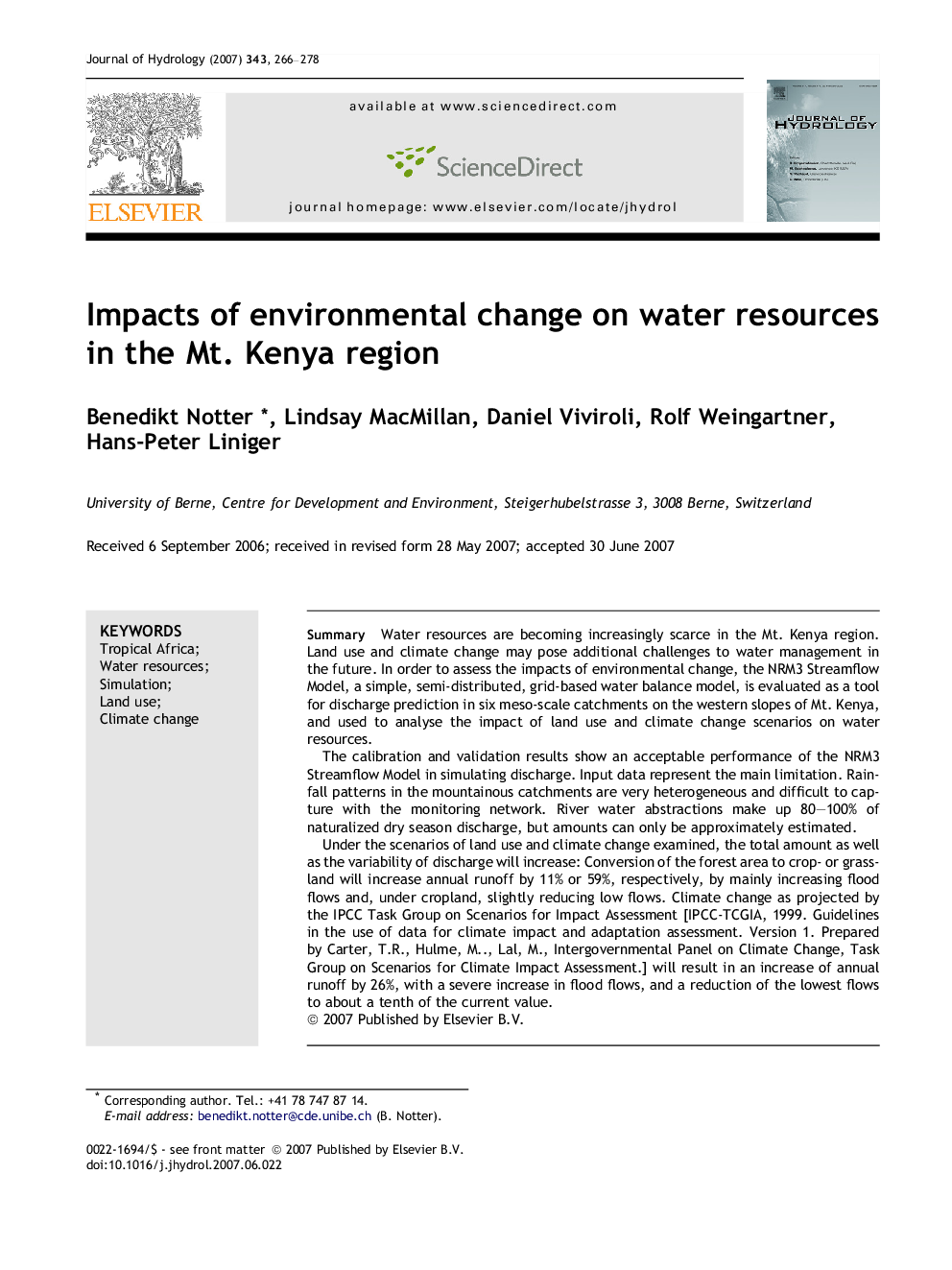| Article ID | Journal | Published Year | Pages | File Type |
|---|---|---|---|---|
| 4579760 | Journal of Hydrology | 2007 | 13 Pages |
SummaryWater resources are becoming increasingly scarce in the Mt. Kenya region. Land use and climate change may pose additional challenges to water management in the future. In order to assess the impacts of environmental change, the NRM3 Streamflow Model, a simple, semi-distributed, grid-based water balance model, is evaluated as a tool for discharge prediction in six meso-scale catchments on the western slopes of Mt. Kenya, and used to analyse the impact of land use and climate change scenarios on water resources.The calibration and validation results show an acceptable performance of the NRM3 Streamflow Model in simulating discharge. Input data represent the main limitation. Rainfall patterns in the mountainous catchments are very heterogeneous and difficult to capture with the monitoring network. River water abstractions make up 80–100% of naturalized dry season discharge, but amounts can only be approximately estimated.Under the scenarios of land use and climate change examined, the total amount as well as the variability of discharge will increase: Conversion of the forest area to crop- or grassland will increase annual runoff by 11% or 59%, respectively, by mainly increasing flood flows and, under cropland, slightly reducing low flows. Climate change as projected by the IPCC Task Group on Scenarios for Impact Assessment [IPCC-TCGIA, 1999. Guidelines in the use of data for climate impact and adaptation assessment. Version 1. Prepared by Carter, T.R., Hulme, M.., Lal, M., Intergovernmental Panel on Climate Change, Task Group on Scenarios for Climate Impact Assessment.] will result in an increase of annual runoff by 26%, with a severe increase in flood flows, and a reduction of the lowest flows to about a tenth of the current value.
